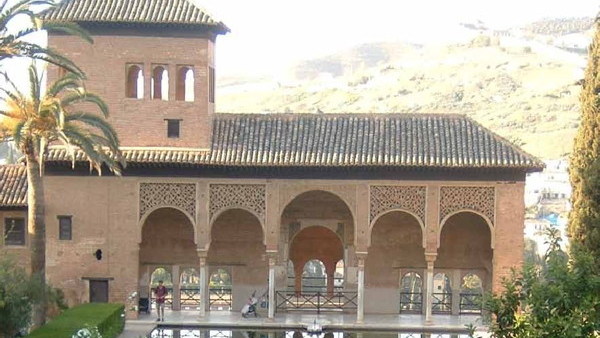
-
In the section of his al-Jawahir al-Mukallala fi al-Akhbar al-Musalsala devoted to the transmission of hadith through chains formed exclusively of Sufi narrators, Ibn Hajar's star student, the hadith master Muhammad Shams al-Din al-Sakhawi states that he had received the Sufi path from Zayn al-Din Ridwan al-Muqri' in Cairo.[1] In the same work al-Sakhawi also mentions several of his teachers and students of hadith who were Sufis. Here are the names of some of them, together with the words used by him to describe them in his biographical work al-Daw' al-Lamiʿ:
1- Abu Bakr ibn Muhammad al-Hishi al-Halabi al-Shafiʿi (b. 848) the head of the Bistamiyya Sufis in Aleppo, the mother trunk of the Naqshbandi Sufi order affiliated with Abu Yazid al-Bistami. He spent two years in Mecca with Sakhawi, who wrote him an ijaza or permission to teach. In this ijaza Sakhawi calls him: "Our master, the masterful Imam of merits and guidance, the Educator of Murids (students in the Sufi path), the Mainstay of Wayfarers in the Sufi path, the Noble Abu Bakr al-Hishi al-Halabi, may Allah preserve him and have mercy on his gracious predecessors (i.e. the chain of his shaykhs in the Sufi path), and may Allah grant us and all Muslims their benefits."[2]
2- Badr al-Din Hussayn ibn Siddiq al-Yamani al-Ahdal (d. 903): al-Sakhawi gave him a comprehensive ijaza granting him permission to teach all of his books.[3]
3- Abu al-Fath Muhammad ibn Abi Bakr al-Madani al-Maraghi (d. 859): Sakhawi took hadith from him. He was head of two Sufi khaniqas in Cairo, the Zamamiyya and the Jamaliyya. He led a life of seclusion for the most part, and wrote a commentary on Nawawi's manual of Law Minhaj al-talibin, and an epitome of Ibn Hajar's Fath al-bari. Because of his defense of Ibn ʿArabi, he was murdered in front of the Kaʿba by a fanatic.[4]
4- Taqi al-Din Abu Bakr ibn Muhammad al-Qalqashandi (d. 867), also called ʿAbd Allah. He received the Sufi khirqa or cloak of authority in Cairo. He is said to have read the whole of Sahih al-Bukhari in three days while in Mecca. He lived in al-Quds, where al-Sakhawi met him and took hadith from him.[5]
5- Thiqat al-Din Abu al-ʿAbbas Ahmad ibn Muhammad al-ʿUqbi (d. 861). He taught hadith and tajwid in Mecca, where Sakhawi studied under him.[6]
6- Kamal al-Din Muhammad ibn ʿAbd al-Wahid al-Sikandari al-Siwasi (d. 861). He was a master of all sciences and taught at the Madrasa al-Ashrafiyya in Cairo, after which he headed the Shaykhuni Sufi khaniqa. He authored many books.[7]
7- Abu ʿAbd Allah Muhammad ibn ʿAli al-Husayni al-Qahiri al-Shafiʿi al-Sufi (d. 876). Al-Munawi's deputy judge in Cairo, a student of ʿIzz al-Din ibn Jamaʿa, Jalal al-Din al-Bulqini and many others, and a student and friend of Sakhawi's teacher Ibn Hajar whose massive work Fath al-Bari he copied twice. A teacher of fiqh and hadith, he wrote an epitome of Ibn al-Athir's Kitab al-Ansab. He was an old acquaintance of Sakhawi's father, and consequently treated Sakhawi himself "with indescribable respect." He was one of the ten students to whom Ibn Hajar gave his authority in teaching hadith after him.[8]
8- Abu Khalid Muhammad ibn Abi Bakr al-Jibrini (d. 860). He was a writer, archer, horseman, and Sufi shaykh at the zawiya (Alcove-mosque) of Jibrin, where al-Sakhawi met him and took hadith from him. Sakhawi says of him: "He was handsome, modest, generous, courageous, and endowed with spiritual strength and virility after the shaykhs of true majesty."[9]
10- Zaki al-Din Abu al-ʿAbbas Ahmad ibn Muhammad al-Ansari al-Khazraji al-Saʿdi al-Muqri' al-Sufi (d. 875). An associate of Ibn Hajar and a prolific writer, he wrote an autobiography in more than fifty volumes, although Sakhawi said he was unaffected, congenial, readily given to tears, and quick of repartee.[10]
11- Thiqat al-Din Abu ʿAli Mahmud ibn ʿAli al-Sufi al-Khaniki (d. 865). Born and raised in Cairo's Khaniqa al-Siryaqusiyya where he taught late in life. He died while at Mecca for the pilgrimage.[11]
12- Abu al-Faraj ʿAbd al-Rahman ibn Khalil al-Dimashqi al-Sufi (d. 869). He was a muhaddith. Al-Sakhawi studied under him in Cairo and at the Umayyad Mosque in Damascus.[12]
NOTES
1A.J. Arberry, Sakhawiana: A Study Based on the Chester Beatty Ms. Arab. 773 (London: Emery Walker Ltd., 1951) p. 35.
2 al-Sakhawi, al-Daw' al-lamiʿ 11:96-97, 74-75.
3 Ibid. 3:144-145.
4 Ibid. 7:162-165.
5 Ibid. 11:69-71.
6 Ibid. 2:212-213.
7 Ibid. 8:127-132.
8 Ibid. 8:176-178.
9 Ibid. 7:197.
10 Ibid. 2:146-149.
11 Ibid. 10:140-141.
12 Ibid. 4:76.
Hajj Gibril
GF Haddad ©"In any case, what Westerners call civilization, the others would call barbarity, because it is precisely lacking in the essential, that is to say, a principle of a higher order."
René Guénon, East And West, 1924
صلّى الله على سيّدنا محمّد و على آله و صحبه و سلّم
The blessings and peace of Allah on the Prophet, his Family, and his Companions, ( sallAllahu `aleihi wa sallam ) .


Related texts
![]() Tasawwuf
Tasawwuf